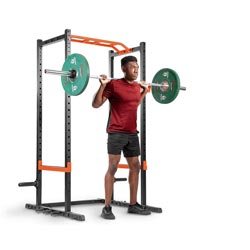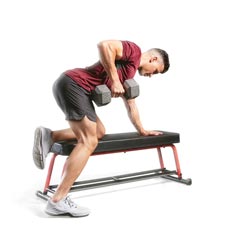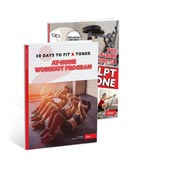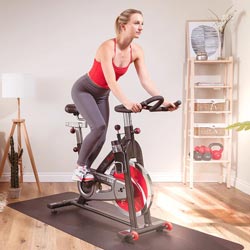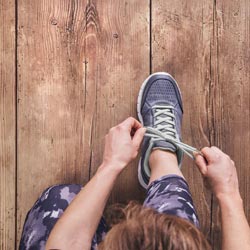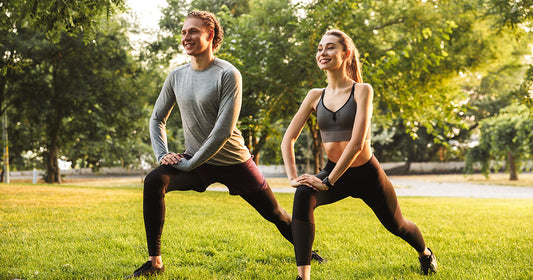Hiking is fun, free, and has tons of benefits; from improving your fitness level to releasing endorphins and reducing stress. On a hike, you get to leave your worries about time, work, and life behind and reconnect with nature.
If you’ve never hiked before, you might be enchanted with the idea, but also a little intimidated. Whether you’re concerned you’re not in good enough shape, or worried you’ll get lost—rest assured hiking is an activity anyone can enjoy.
With the right trail, gear, and prep you’ll be well-equipped to enjoy your hike. Here’s everything you need to get started. From how to find a trail to how to pick a trail that’s right for you, and all the gear you’ll need to pack in. We hope it gives you the confidence to lace up your boots and get outside.
How to Find Hiking Trails
First and foremost, you need a trail. It sounds so simple, but if you’ve never been hiking, you might not know where to look. Here are a few of the best places.
Easy as that. Google makes it easy to narrow in on hikes in your area. The tough part is some of the most beautiful trails are those less traveled, and Google thrives on high search volumes. Use Google to get savvy with must-hit trails but be willing to get more granular in your search if you want to find the true gems.
Apps
There are plenty of apps to choose from when it comes to hiking, but my personal favorite is AllTrails. Think of it as Yelp for hiking. It basically has every hike known to man. Each hike is rated by difficulty, distance, and other helpful tidbits like if it’s kid or dog friendly.
Hiking Books and Maps
Don’t overlook books and maps. Some books are extremely specific to a city or area, which is great for if you’re traveling. Maps are useful not just for plotting out where you’re going to go, but in case you lose cell service and get lost on the trail. We highly recommend picking one up.
Local Information Centers
These are more common before entering state or national parks. Rather than paying the fee at the gate and breezing through, ask for advice and tips—no one knows the park better than those who are there every day.
How to Choose Your Hike
Once you’ve narrowed in on hikes in your area, it’s important to pick one that’s appropriate for your ability. Hiking at your level is essential for both safety and enjoyment—what it’s all about. Check out the key variables to keep in mind below.
- Distance
- Duration
- Difficulty (many hikes are classified in guidebooks and online)
- Elevation
- Time of year
- Weather
Get the Right Hiking Gear
Hiking is much more enjoyable when you have the right gear. It ensures you stay safe and comfortable in the elements.
You might not think you need much, but a lot can change over the course of a few hours; whether you’re dealing with heat, cold, or anything in between you want to be prepared for any scenario. Plus, you never know if you’ll get stuck on the trail. Getting stuck is rare, but not impossible. Being prepared could be essential for survival. Here’s what you need:
Waterproofs
No one thinks they need waterproof jackets, pants, or other layers until they do. When that moment hits, you’ll be happy you packed light layers in your pack to stay dry.
Layers
Weather and trails are unpredictable, dress or pack for both hot and cold. Look for sweat-wicking material like dri-fit for your base layers which will help you stay cool and dry.
Footwear
Consider your shoe based on the trail, and always wear comfortable, broken-in footwear. Save the chunkier hiking boots for longer distance or more challenging trails. A simple, lightweight hiking trainer is all you need for most short, simple trails.
What to Pack
Besides your layers, you’ll want to pack in some necessities. Like clothing, the gear you pack in could be the difference in your comfort, overall experience, and safety, so pack wisely and don’t skip this step. Below, everything you’ll need for a day hike.
Backpack
You need somewhere to pack all the goods. Invest in a lightweight backpack to hold your layers and essentials. The right size backpack will hold all the water you need for the day, and any other travel size necessities and snacks.
Water
You’ll need roughly 32 ounces (or one liter) of water for every 2 hours. A water bladder can help carry a larger volume of water if you plan to be out for longer, and many are designed to conveniently slip into a backpack.
Sunscreen
Protecting your skin is an important part of your overall health. Aim for SPF 30 at a minimum and reapply if you’re out for longer than a few hours at a time.
First Aid Kit
You can never be too prepared. Find a mini first aid kit at REI or other sporting goods stores that have everything you need in a small package.
Mobile Phone and Portable Charger
We can’t stress the importance of having a portable phone charger. While disconnecting might be your first priority when going out for a hike, it’s your lifeline if you need directions, get lost, or need to make a call. We recommend turning off your phone when not in use to preserve the battery.
Snacks
Choose snacks that will keep you sustained and promote muscle sparing and recovery along the trail. Lean protein like beef jerky and protein bars, a combo of complex and fast carbs like granola and fruit, and healthy fats like nuts and seeds for satiety. Pack more than you think you’ll need, you can work up an appetite on the trail, and it can come in handy if a hike takes longer than expected.
Navigation Tools
Pack a map and a small compass. It might sound outdated, but if your phone dies, nothing beats the tried and true for finding your way home.
Headlamp or Flashlight
If it gets dark while you’re out on the trail, a flashlight or a headlamp is a godsend. Sometimes, hikes just take longer than we expect, or we think we can push it for another 30 minutes or so to catch the big view at the top. It always seems like a good idea at the time, but darkness sets in fast. What then? Take out word for it, a small light is easy to pack, and means you don’t have to worry.
What to Do Before You Hike
Once you’re all set, there are a few last things to check off before you head for the trail.
Find a Friend to Hike With
If you’re a newbie to hiking, hiking with a friend can take the pressure and fear of hiking alone off the table. Plus, it’s way more fun to share the outdoors with others.
Fuel Up
Hiking is hard work. Not only should you pack snacks, but you’ll want to be sure you’ve eaten a solid meal before hitting the trail. Aim for a blend of 2:1 carbs to protein in your pre-workout meal, eating at least 15 to 30 grams of carbs like protein powder overnight oats, or toast with peanut butter.
Check the Weather
This one is a no-brainer, but the weather changes all the time. Even if you checked it the night before, check again and make sure you are packed and are dressed accordingly.
Tell Someone You’re Going
Just like if you were going on vacation, tell someone where you’re going and how long you’ll be. Whether it’s a neighbor, your mom, or a friend. Tell someone you know who will check in on you and follow through if they haven’t heard from you in too long.
Follow Basic Hiking Etiquette
Finally, make sure to follow hiking etiquette when you’re out on the trail. Other hikers and nature will thank you.
- On a narrow trail, those hiking uphill have the right of way.
- Use headphones, and don’t play music out loud.
- Stay on the trail to avoid contributing to the erosion or pollution of natural habitats.
- Don’t disrupt wildlife and don't feed animals.
- Leave no trace.
Last but not least, just go outdoors! It might seem like a lot to consider but once you have one or two hikes under your belt, you’ll be a pro.
If you want to track your workout, strap on a heart rate monitor, and connect to the SunnyFit app. Get out in nature, move your body, and have fun!


